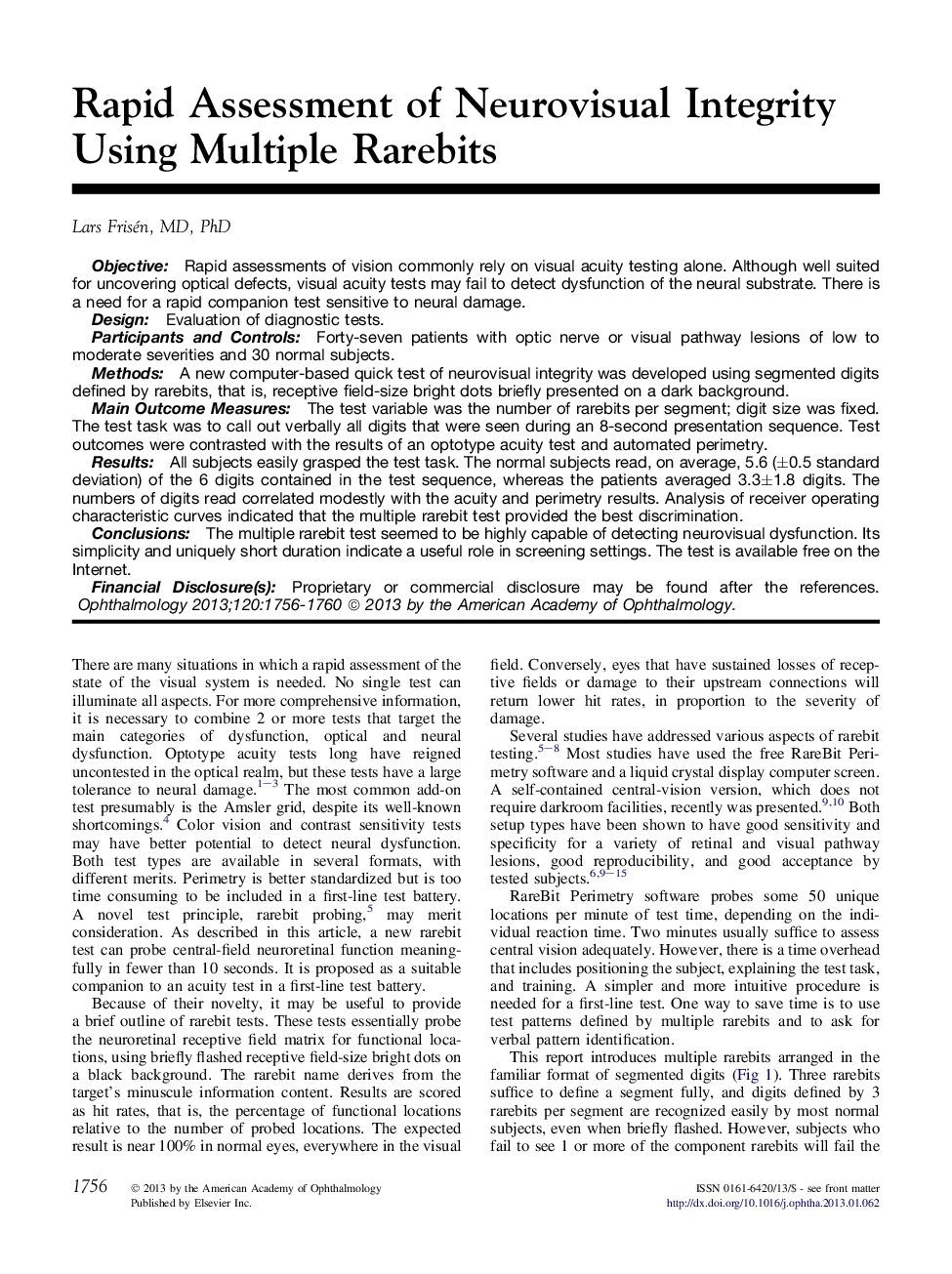| Article ID | Journal | Published Year | Pages | File Type |
|---|---|---|---|---|
| 6201779 | Ophthalmology | 2013 | 5 Pages |
ObjectiveRapid assessments of vision commonly rely on visual acuity testing alone. Although well suited for uncovering optical defects, visual acuity tests may fail to detect dysfunction of the neural substrate. There is a need for a rapid companion test sensitive to neural damage.DesignEvaluation of diagnostic tests.Participants and ControlsForty-seven patients with optic nerve or visual pathway lesions of low to moderate severities and 30 normal subjects.MethodsA new computer-based quick test of neurovisual integrity was developed using segmented digits defined by rarebits, that is, receptive field-size bright dots briefly presented on a dark background.Main Outcome MeasuresThe test variable was the number of rarebits per segment; digit size was fixed. The test task was to call out verbally all digits that were seen during an 8-second presentation sequence. Test outcomes were contrasted with the results of an optotype acuity test and automated perimetry.ResultsAll subjects easily grasped the test task. The normal subjects read, on average, 5.6 (±0.5 standard deviation) of the 6 digits contained in the test sequence, whereas the patients averaged 3.3±1.8 digits. The numbers of digits read correlated modestly with the acuity and perimetry results. Analysis of receiver operating characteristic curves indicated that the multiple rarebit test provided the best discrimination.ConclusionsThe multiple rarebit test seemed to be highly capable of detecting neurovisual dysfunction. Its simplicity and uniquely short duration indicate a useful role in screening settings. The test is available free on the Internet.Financial Disclosure(s)Proprietary or commercial disclosure may be found after the references.
